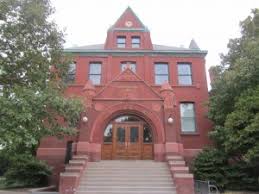Architecture Program

Architecture Program: Faculty Scholarly and Creative Activity
Document Type
Article
Date of this Version
1997
Abstract
Throughout the world, people are migrating to find jobs and to seek a better life. As agricultural processors locate plants in rural areas with raw materials and lower labor costs, towns are experiencing pressures. They are experiencing an increase in the number of jobs available and a shortage of affordable housing to meet the needs of a growing population. To better understand the needs and perceptions of residents in a small midwestern town (population: 4,151), a multidisciplinary research team from the College of Architecture at the University of Nebraska-Lincoln conducted a study between September 1995 and May 1996. The focus of the project was to explore the effects of recent population growth on housing and other physical environmental factors related to the quality of life. Data was collected from both long-time residents (more than 15 years) and newly-arrived residents (less than five years), utilizing a door-to-door survey technique. The data was analyzed through frequency distribution, means, and variances. The data was examined in both an aggregated manner as well as separated to determine what the similarities and differences were between the long time and newly arrived residents. The survey results clearly show that many issues exist in which long-time and newly-arrived residents perceptions are quite similar. But, there are also a number of issues in which resident perceptions tend to differ. What actions could be taken to improve housing conditions? What can be learned from the results that could help bring about positive changes in other similar communities? The presentation will attempt to answer these and other questions.


Comments
Published in the Proceedings of the 28th Annual Conference of the Environmental Design Research Association EDRA 28 (1997): 174-175. Copyright 1997, the Environmental Design Research Association. Used by permission.